PROGNOSTICUL PACIENȚILOR CU TROMBOEMBOLISM PULMONAR LA SUPRAVEGHERE DE DURATĂ
DOI:
https://doi.org/10.52692/1857-0011.2024.1-78.04Cuvinte cheie:
embolie pulmonară, mortalitate, prognosticRezumat
Tromboembolismul venos (TEV), exprimat clinic prin tromboză venoasă profundă (TVP) sau embolie pulmonară (EP), este, la nivel global, al treilea cel mai frecvent întîlnit sindrom cardiovascular acut după infarctul miocardic şi accidentul vascular cerebral. Embolia pulmonară este asociată cu morbiditate și mortalitate ridicată. Prognosticul acestor pacienți pe termen lung este puțin studiat.Scop: Analiza mortalității și a evenimentelor clinice la supraveghere de durată la pacienții cu EP confirmat. Material și metode: În studiu au fost incluși 168 pacienți cu EP, 53% bărbați și 47% femei, vîrsta medie 61,2±12,8 ani, spitalizați consecutiv și tratați în Institutul de Cardiologie. Pacienții au fost clasificați în 4 grupuri de risc conform Ghidului Societății Europene de Cardiologie din 2019. Durata de supraveghere în lotul de studiu a constituit 11,4±0,9 luni. Rezultate. Au decedat pe parcursul studiului 23 de persoane (13,7%), 8 dintre aceștea în timpul spitalizării și alte15 - după externare din spital; la ultimii decesul a survenit subit - în 4 cazuri (26,6%), a fost de cauză cardiovasculară- în 4 cazuri (26,6%), prin cancer - la 5 (30%) persoane și de alte cauze - la 2 (13,3%) pacienți. TEV repetat a fost urmărit la 4 (2,5%) persoane, inclusiv EP - la 3 și TVP la 1 pacient. Au dezvoltat accident vascular cerebral în perioada de supraveghere - 4 (2,5%) pacienți, infarct miocardic acut - 5 (3,1%), un alt eveniment arterial - 1 (0,2%) pacient. Complicații hemoragice au suportat 20 pacienți. Hipertensiunea pulmonară cronică tromboembolică a fost depistată la 12,4% persoane peste 5,4±2,8 luni de la EP primar. Cancer nou depistat a fost urmărit la 2 (1,25%) persoane.Concluzii. Rata de mortalitate la pacienții cu EP pe o perioadă medie de 11,4±0,9 luni a constitut 13,7%, inclusiv 4,7% - în spital și 8,9% - la urmărire de durată, decesul în spital fiind înregistrat în proporție semnificativ mai mare la pacienții din categoria de risc înalt și intermediar înalt comparativ cu cei cu risc intermediar-redus și redus, totodată, nu au fost stabilite diferențe statistic semnificative între aceste grupuri in rata de mortalitate la distanță; principala cauză de deces în spital a fost EP, iar în perioada de supraveghere a predominat decesul de cauză cardiovasculară, urmat de decesul prin cancer.
Referințe
Konstantinides S., Meyer G., Becattini C., et al. 2019 ESC Guidelines for the diagnosis and management of acute pulmonary embolism developed in collaboration with the European Respiratory Society (ERS). The Task Force for the diagnosis and management of acute pulmonary embolism of the European Society of Cardiology. Eur Heart J 2020; 41: 543 - 603
Ng AC, Chung T, Yong AS, et al. Long-term cardiovascular and noncardiovascular mortality of 1023 patients with confirmed acute pulmonary embolism. Circ Cardiovasc Qual Outcomes. 2011;4:122–128.
Ebner M, Kresoja KP, Keller K, et al. Temporal trends in management and outcome of pulmonary embolism: a single-centre experience. Clin Res Cardiol. 2020;109:67–77.
Buller HR, Davidson BL, Decousus H et al.: Subcutaneous fondaparinux versus intravenous unfractionated heparin in the initial treatment of pulmonary embolism. N. Engl. J. Med. 2003; 349, 1695–1702
Wells PS, Anderson DR, Rodger MA et al.: A randomized trial comparing 2 low-molecular-weight heparins for the outpatient treatment of deep vein thrombosis and pulmonary embolism. Arch. Intern. Med. 2005; 165, 733–738.
The van Gogh Investigators. Idraparinux versus Standard Therapy for Venous Thromboembolic Disease. N Engl J Med 2007; 357:1094-1104
Musset D, Parent F, Meyer G et al. Diagnostic strategy for patients with suspected pulmonary embolism: a prospective multicentre outcome study. Lancet 2002; 360, 1914–1920 .
Nijkeuter M, Sohne M, Tick LW et al.: The natural course of hemodynamically stable pulmonary embolism: Clinical outcome and risk factors in a large prospective cohort study. Chest 2007;131, 517–523.
Perrier A, Roy PM, Aujesky D et al.: Diagnosing pulmonary embolism in outpatients with clinical assessment, D-dimer measurement, venous ultrasound, and helical computed tomography: a multicenter management study. Am. J. Med. 2004;116, 291–299.
Goldhaber SZ, Visani L, de Rosa M. Acute pulmonary embolism: clinical outcomes in the International Cooperative Pulmonary Embolism Registry (ICOPER). Lancet 1999; 353, 1386–1389
Murin S, Romano PS, White RH: Comparison of outcomes after hospitalization for deep venous thrombosis or pulmonary embolism. Thromb. Haemost. 2002; 88, 407–414
Lobo JL, Zorrilla V, Aizpuru F et al.: Clinical syndromes and clinical outcome in patients with pulmonary embolism: findings from the RIETE registry. Chest 2006;130, 1817–1822
Eckelt J., Hobohm L., Merten M., et al. Long-term mortality in patients with pulmonary embolism: results in a single-center registry Res Pract Thromb Haemost. 2023;7:e100280
Alotaibi G, Wu C, Senthilselvan A, McMurtry MS. Short- and longterm mortality after pulmonary embolism in patients with and without cancer. Vasc Med. 2018;23:261–266
Agnelli G, Prandoni P, Becattini C et al.: Extended oral anticoagulant therapy after a first episode of pulmonary embolism. Ann. Intern. Med. 2003;139, 19–25.
Pengo V, Lensing AW, Prins MH et al.: Incidence of chronic thromboembolic pulmonary hypertension after pulmonary embolism. N. Engl. J. Med. 2004; 350, 2257–2264
Miniati M, Monti S, Bottai M et al.: Survival and restoration of pulmonary perfusion in a long-term follow-up of patients after acute pulmonary embolism. Medicine 2006; 85, 253–262.
Heit JA, Silverstein MD, Mohr DN, et al. Predictors of survival after deep vein thrombosis and pulmonary embolism: a population-based, cohort study. Arch. Intern. Med. 1999; 159, 445–453
Faller N, Limacher A, Mean M, et al. Predictors and causes of long-term mortality in elderly patients with acute venous thromboembolism: a prospective cohort study. Am J Med. 2017;130:198–206.
Schulman S, RhedinAS, Lindmarker Pet al.: A comparison of six weeks with six months of oral anticoagulant therapy after a first episode of venous thromboembolism. N. Engl. J. Med. 1995; 332, 1661–1665
Buller HR, Cohen AT, Davidson B et al.: Extended prophylaxis of venous thromboembolism with idraparinux. N. Engl. J. Med. 2007; 357, 1105–1112
Descărcări
Publicat
Număr
Secțiune
##category.category##
Licență
Copyright (c) 2024 Buletinul Academiei de Științe a Moldovei. Științe medicale

Această lucrare este licențiată în temeiul Creative Commons Attribution 4.0 International License.



